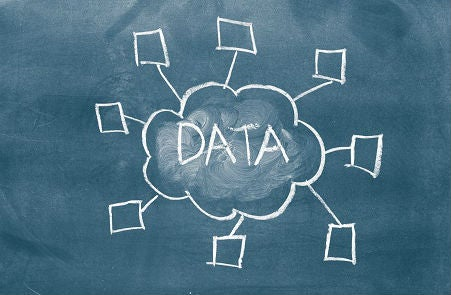Creating Change Through Data
It’s the start to another work week and you know exactly what you’re going to get done. No, you can’t predict the demands that will arise, or the unexpected meetings that will fill your calendar, but you’re confident in what you’ll accomplish. You’re going to create change—real, captivating, data-driven, other-departments-drool-over-and-plead-for-your-expertise change.

This sponsored content is brought to you by Adobe, CMO.com’s parent company.
It’s Monday—and you’re exhilarated. You’re the master of your craft.
It’s the start to another work week, and you know exactly what you’re going to get done. No, you can’t predict the demands that will arise or the unexpected meetings that will fill your calendar, but you’re confident in what you’ll accomplish. You’re going to create change—real, captivating, data-driven, other-departments-drool-over-and-plead-for-your-expertise change.
This scenario may sound too good to be true, but it’s actually based on real people who’ve created real change. These marketers live on the bleeding edge of data-driven marketing and can get real-time feedback on each touch point along the customer journey. With such detailed information guiding each decision, how could they not be confident in their ability to create change?
In an interview at the 2015 Adobe Summit, Chris Marin, then director of digital marketing at Computer Sciences Corporation (CSC), spoke about the dramatic change he created as he relied on one advanced tool—algorithmic attribution modeling—to inform his operational and strategic planning.
“Our success became apparent to the whole company,” Marin said. “Teams that traditionally haven’t existed under the purview of digital marketing are now coming to us because they want to get on the grid. They want to see their activities reflected in our dashboards and reflected in our attribution models so they get the credit they deserve.”
Algorithmic attribution models like Marin’s use advanced statistics and machine learning to objectively compute the impact of each marketing touch along a customer’s journey. You no longer have to waste time trying to fill in the gaps between first- and last-click metrics with your best guess analysis. As Shaina Boone, SVP of marketing science at Critical Mass said, “The era of gut is over.”
These advanced insights allow you to make strategic course corrections throughout the buying cycle. It gives you confidence to be bolder, to ask more questions, and to try more things. And because your decisions are informed by a thorough understanding of your customer, you’re in a position to create positive change rather than wish for it.
In their book Creative Confidence , IDEO founder David Kelley and his brother Tom describe the phenomenon that occurs when you truly believe you can create change. They write, “Legendary psychologist and Stanford professor Albert Bandura has shown … [that] individuals who come to believe that they can effect change are more likely to accomplish what they set out to do. Bandura calls that conviction ‘self-efficacy.’ People with self-efficacy set their sights higher, try harder, persevere longer, and show more resilience in the face of failure.”
Advanced data-driven marketing tools like algorithmic attribution models can help you develop self-efficacy. You can feel confident as you try new strategies, craft new messages, or launch new campaigns because these decisions have been guided by precise data on the customers’ wants and needs. Having a detailed analysis on your customer’s journey gives you freedom to ask more “whys.” It enables you to become the master of your craft.
In fact, marketers who make these kinds of significant changes are so effective that in their 2015 report “Evaluate Your Marketing Performance Measurement Maturity,” Forrester has given them a special name. They’re called “measurement experts,” and they’re dedicated to “identifying the most effective marketing mix for each and every customer to achieve true personalization and customer engagement.”
For Chris Marin, the confidence certainly paid off. Within two to three years of adopting a data-driven marketing plan—and specifically using algorithmic attribution modeling—his team more than doubled a key metric used to measure performance. “It’s not just about making sense of the data,” said Marin, “but trying to then create experiences—trying to move the needle.”
Marin set his sights even higher and thought about the change he could create not just within his own team, or within his own department, but across multiple departments. He wanted to make sure the sales and marketing departments were unified in their data tracking approach, so he made it a point to work more closely with the sales team. By identifying common metrics to track, they created powerful reports and a seamless story for management.
“That was really transformative,” said Marin, “because before that stage we would talk to our senior executives about things like page views and visits and volume metrics. After coordinating with the sales team, we started talking about actual opportunities, the engagement of our target accounts, and the dollar amounts that are associated with it. That’s something that resonates very well at the executive level.”
Marin’s not an anomaly. There are others like him and using advanced tools liked algorithmic attribution modeling, you can be the agent of change. You can be exhilarated on Monday morning, confident of what’s to come, master of your craft.
Take The First Step
To learn how you can use algorithmic attribution modeling to improve your connection to your customers, download Adobe’s “On Love and Data: Use algorithmic attribution to define the relationship with your customers” (short registration required). The report features clear tips on how marketers can use data to take control of their customer relationships.